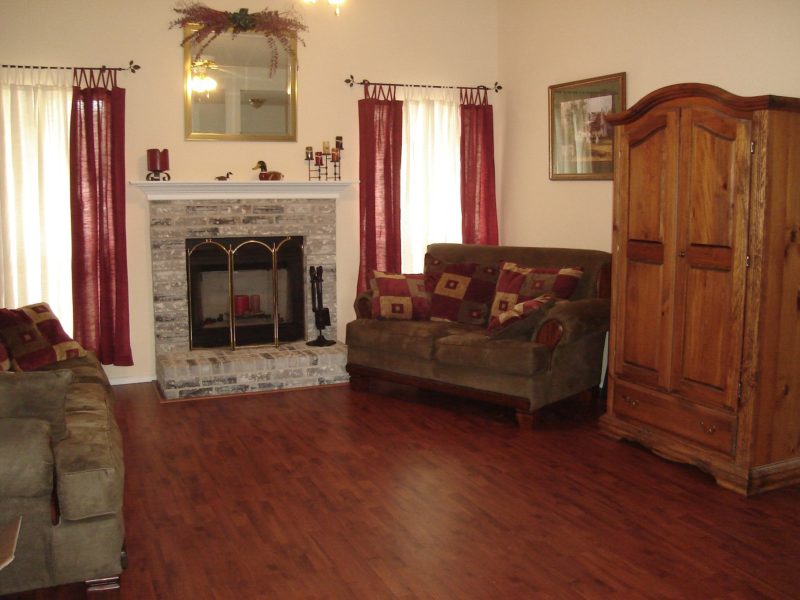Small, square rooms might be challenging to decorate. To create a layout that’s both practical and visually appealing without seeming crowded, some design thinking is required on your part. That is why we are here to help you know when to use both a couch and a loveseat.
Couch Vs. Loveseat
But before we get into configuration, let us first know the difference between a couch and a loveseat. Only a little amount of variance exists between the several wordings. As an example, the only technological difference between a couch and a loveseat is the size of the latter.

There are two types of seating for two people. The two-seater couch and the loveseat, both of which are meant for two people but have distinct proportions. Look at the dimensions of your room and choose the one that works best!
When to Use Both a Couch and a Loveseat?
Object of Focus
Having the sofa and loveseat arranged around a natural focal point is appealing and good use of space. The couch and loveseat in an L-shape give an unimpeded view of the outdoors and an airy atmosphere. Ideally, you should place a sofa or loveseat 10 feet away from a focal point.
Sofa and loveseat facing each other with a focal point at an open end is an alternative. Place a tiny accent table and light at one end of the loveseat. It will balance its apparent weight with the more oversized sofa.
Arranged in a U-Shape
To create a U-shaped furniture arrangement, one or two more chairs are required. Start by arranging your sofa and loveseat in an L-shape. Then, place a tiny accent table on either side of the couch surrounded by two small accent chairs.
This design creates a U-shape with one side open. Instead of two little chairs and a small table, you may use one bigger armchair and a more prominent accent piece of furniture. A more oversized, more comfortable chair is gained as a result of this configuration.
Square
The conversation is more intimate when the seating is square. Assemble it with a sofa and loveseat facing each other and a pair of matching chairs opposite each other. A vast, spherical ottoman is positioned in the center of the arrangement to serve food and beverages.
Face-to-Face
Assembling a pair of couches with their backs to one another creates a perfect talking space. Placing the couches in front of a fireplace or picture window will draw attention to it. Putting a fireplace in the middle of a sofa arrangement would be a good example.
However, it also creates a symmetrically balanced discussion area. To provide a convenient snack table and footrest, place an ottoman between the sofas. You can visually balance two couches with different lengths by placing a small end table next to the shorter one.
Back-to-Back
It is possible to split a big living room into two different sitting zones by using back-to-back sofas. In a large room, place the two sofas so that their backs are facing each other. You may move sofas apart to make room for a couch table in the space between them.
Each end of the table should have a light, while the center should have a tall vase of flowers. With this setup, you can offer task lighting for both sofas while creating a barrier between the two rooms. A coffee table and a set of chairs will complete each seating space.
Arrangement with an L-Shape
You may create an L-shaped furniture arrangement by putting two sofas next to each other. The tiny space between the sofas is perfect for an end table. Place a lamp on top of the end table to light the area for reading or other activities.
Even more, you may add seating by adding a third couch or armchairs to the open end of the “L.” Set up an L-shaped arrangement with the open portion facing a picture window to give a picturesque external view. Assemble the room by placing a rug between two sofas.
A minimum of two inches should be left between the wall and sofa when placing them against one. When a couch frequently rubs against a wall, the upholstery is protected from harm. In addition, it helps to cover a wall from scratches and dents caused by the sudden impact of a sofa.
An example of this is an open-concept room. You can divide it into two zones by placing sofas “floating” in the middle rather than hugging a wall. With this you are able to use both your loveseat and couch.
Useful Hints
According to interior design guidelines, critical pathways in space should have a minimum of a 3-foot walkway. The distance between a couch and a chair or loveseat should be at least 22 inches. Meanwhile the distance between a sofa or loveseat and a coffee table should be at least 12 inches.
It’s possible to construct a more functional arrangement by following these principles.Chairs without arms and with low-profile track arms use less space in a small square area, which is another benefit. An area rug adds warmth and texture to a room, helping to refine and define it.
Large windows may also distort the appearance of a tiny, square space. Choose a rug size that complements the rest of your decor. Keep these tips in mind so you know when to use both a couch and a loveseat properly.
Conclusion
You don’t have to sacrifice one So, when to use both a couch and a loveseat? There are a lot of ways wherein you can maneuver both your loveseat and your couch in one room.
